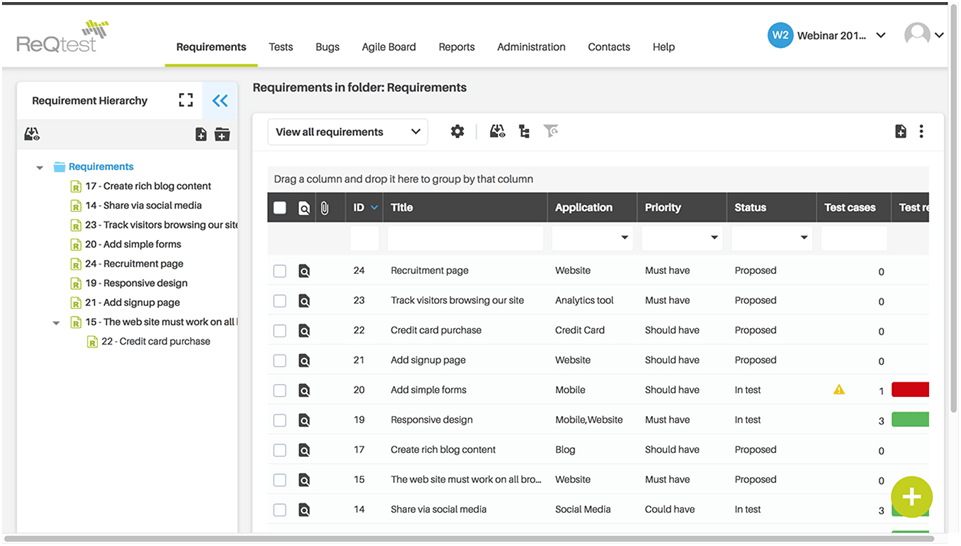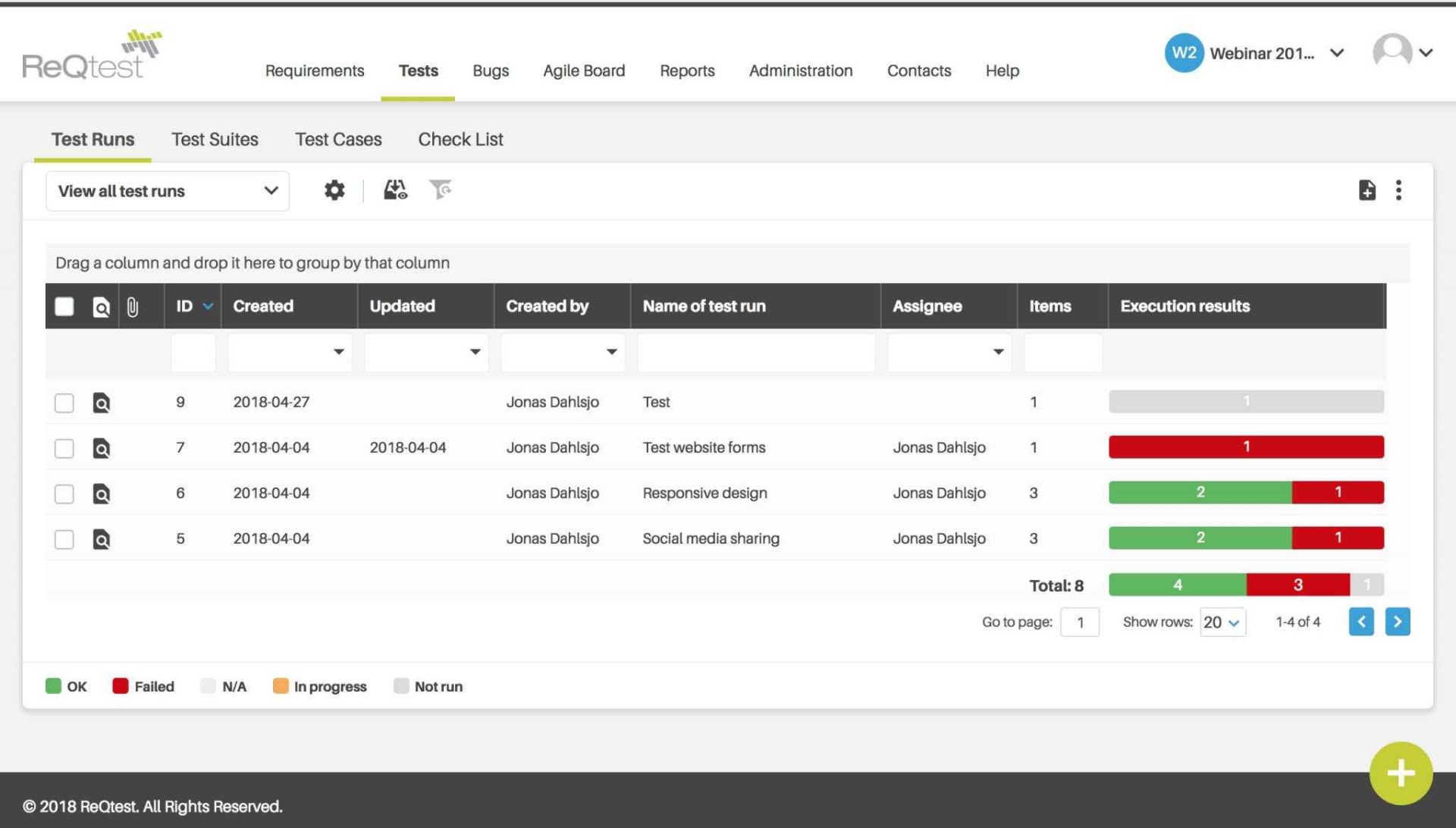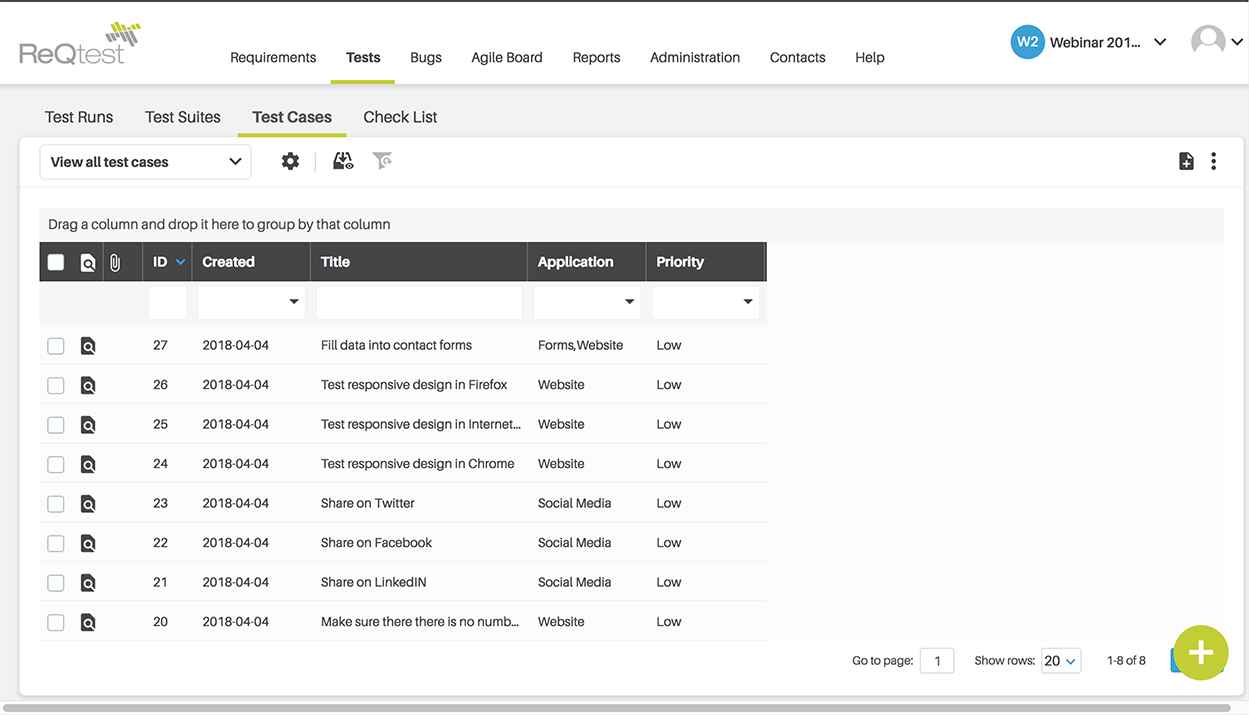April 11, 2017
Application Lifecycle Management – ALM Tools & Processes You Need to Know
Application lifecycle management, ALM, is the change in attitude towards development of a software product. It is a broader term which has encompassed the several disciplines that were considered to be separate previously such as project management, requirements management, development, testing and quality assurance, customer support and IT service delivery.
In this article, we will understand the concept of application lifecycle management. We will discuss the differences between application lifecycle management and traditional software development lifecycle. Later on, we will discuss the components of ALM methodology in detail.Then, we will explain several factors that can help you pick up the ALM tool that best suits your needs. Finally, we will see how ReQtest serves as the right ALM tool for you.
What is Application Lifecycle Management?
ALM or application lifecycle management is a concept which merges business management with software engineering to manage the complete product life cycle.
Application lifecycle management is the process of product life cycle management which governs the whole process since the product is just an idea until it is retired. The process of application lifecycle management starts before the requirements are gathered and continues even after the system is deployed or delivered to the customer.
Thus, ALM is an umbrella which deals with project managements, software development, software testing, deployment, support and maintenance of the product. ALM enables the development and operations team to work in liaise throughout the product life cycle.
ALM is a superset of Software Development Lifecycle
It is common that ALM is considered to be an equivalent of software development life cycle, SDLC. It is essential to differentiate that ALM is the process of managing complete product life cycle while SDLC is the process of managing the software development lifecycle only.
SDLC does not cater the project management activities of the product. SDLC does not take care of a system until is retired; rather SDLC finishes with the deployment of the software system and a limited support time. This means that ALM considers operations as a part of application’s lifecycle.
Software development lifecycle is alienated from the business processes. On the other hand, ALM serves as a support to business processes. As business needs change, the requirements and features of application also change. The ability to maintain and modify an application after it’s deployed is central to ALM.
The spectrum of ALM is the fullness of application right from the kick-off of its idea to its handover to the end user which makes ALM and SDLC two separate entities with respect to project management.
Understanding the Components of ALM Methodology
ALM is the fusion of all the components taking part in a software delivery process. A single ALM tool is enough to bind together different tasks that are performed by business analysts, developers, testers and IT support team in dissimilar manner.
Some major components of an ALM tool are listed below:
Requirements Management
ALM tools have the functionality to help manage the requirements in an effective and efficient manner. Some ALM tools also support use cases as a subset of requirements definition process. This helps the team to manage their requirements efficiently and keep a track of associated scenarios and their links to the requirements and test cases.
Planning and Estimation
Planning and estimation is the kick start phase of any project in actual. ALM tools help in estimation and planning out the project. ALM tools are designed in a way that they can adapt any SDLC methodology either it is waterfall, Agile or Scrum.
ALM tools helps in estimating individual tasks that are linked back to the requirements. ALM tools also help in complex requirements by following a specific workflow functionality to ensure that all the assigned tasks follow a set of steps and go through their quality tests.
Software Development
Source code management is essentially required in product lifecycle management to keep working copies of the code that is distributed in different groups within a team i.e., testers, support team and development teams. ALM tools provide this functionality of integrated source code management.
Some ALM tools even provide integration with industry standard tools like Git. Although source code management is not a permanent part of ALM suites but some of the top notch ALM tools provide development tools integration so that the developers can actually write code and that code is managed within that ALM tool which keeps away the hassle of a separate source code management tool.
Quality Assurance
The difference between regular project management tools and ALM tools is that they include quality assurance as a part of software development. ALM tools allows creation of test cases within separate folders.
Additional functionalities including sorting and filtering is provided, allows different columns and fields so that the user can view test cases according to his requirement. In depth description of test cases i.e. defining specific parameters and test steps is also possible in application lifecycle management tools.
Deployment
The mere project management tools do not offer continuous integration for compilation and packaging of the softwares but latest ALM tools come with integration of different CI servers. This helps in combining information from other sources to build information and gives visibility of changes in every build. These tools allows you to be able to see code changes within each build, and identification of customer issues within specific builds.
Maintenance and Support
With the rapid changes in Agile methodologies deployment and development has become a continuous process of an SDLC. In such scenario customer support helps the developers and fixers to work efficiently according to their requirements and correct user stories are built to be helpful in next development cycles.
Collaboration and Communication
While a project life cycle is being executed communication takes place over emails, text messages group meetings which leaves the other team members in vacuum and no proper record of information interchange is maintained. ALM tools solves this problem by providing instant messengers to let user communicate without any geographical restrictions and RSS feeds keeps other team members alert of the communication.
Choosing the right ALM tool for your Company
Deciding for the best suited ALM software according to your needs can be an anxiety producing, time consuming and tough task. One wrong decision can take all your effort and money to vain. Make a right decision and all your project management related efforts become fruitful.
To come up with the best option for an ALM software an organization needs to understand its demographics and its bottlenecks which affects the efficiency of teams within an organization. The organization should come up with its own use cases to determine a good and beneficial tool. The next step is to identify different tools based on their features to manage the organizations use cases.
Let’s take a look at some use cases in which some ALM tools can be a best fit:
Merging Assets
When businesses merge together for mutual interest may result in some inconsistencies and incompatibilities in their ALM approach. Two different businesses may be habitual of following different methodologies for their operations and development. The merging of two companies that are situated at different geographical location is even more complex.
Unifying and making ALM process consistent and providing a mean of collaboration are the essential points of such organizations. Such organizations should prefer ALM tools that provide visibility, traceability and better collaboration features. HP, IBM and Microsoft provide such enterprise proven ALM tools which meet the basic needs of merged organization.
The growing start-ups
The growing startups prove to be typical ALM use case scenarios. In such a scenario small organizations take part in tremendous rapid growth due to the initial release of their very first product.
The core team of such a startup is usually in the growing phase and may not be located in the same campus or geographical location. There can also be addition of new stakeholders which needs new levels of management, support staff and even new stakeholders if the organization has turned into a traded entity. Such organizations implement agile methodologies and try to eliminate process overheads.
Velocity and continuous maintenance is a pain point for these organizations so need ALM tools which provide traceability and visibility without extra overhead. They also need a feature to improve communication among distributed teams. The ALM tool must be user friendly and easily installable, and the vendor should provide support and training because these startups may not have such facilities in-house. Rally, Atlassian, Version One are some of the tools that meet above mentioned features of suitable ALM tools.
Regulated Business
The organizations which functions in a regulated manner have some specific goals with respect to ALM. Such Regulatory companies are supposed to get in compliance with the Health and Insurance Acts or other regulatory bodies’ policies because their stakeholders are consisted of these regulatory bodies.
These organizations are usually dealing with safety critical or medical related software’s in which quality management is an essential element. They cannot risk major defects to escape into production. Control management and documentation is required throughout the life cycle and ALM tool being used must simplify and facilitate in this process.
Visibility is also important and the ability to provide information easily and quickly is very important. Polarion is one of the strong competitors for these regulatory organizations.
ReQtest – Your ALM tool
ReQtest’s software management product identifies and addresses the requirement of a stronger connection between process modeling, quality assurance management and requirements and use cases definition. The ReQtest model combines business process into application lifecycle management which governs the various roles involved in the business process modeling and testing cycles, along with clear and better communication between end users and technical teams. This communication helps in betterment of business results and high level activities and high level requirements are identified.
Requirements Management
The first and foremost feature for any ALM tool is its capability to manage requirements. ReQtest provides requirements management module which offers several ways of organizing and viewing your requirements. You can store them in folders and view the hierarchy in a tree view. You can use agile boards to map requirements as sticky notes.

The detailed view on the right presents information about the requirements’ priority, status, comments, date created, whom by and who is assigned to the requirement. The best thing about ReQtest is that you can see all items linked to a requirement at one place i.e. child requirements, test cases, bug reports and activity. In this way you have a better visibility of the progress of your application and where it is directed.
 Test Case Management
Test Case Management
Test case management is the key module that distinguishes ReQtest from mere project management tools. In the Plan Tests tab, you have options including create test case, view test cases, import test cases, test case activity, group in test suites, view checklists, import checklists, view test runs. You can import and export your test cases in csv file format. ‘View test runs’ options gives you the ability to see the execution of test cases and their respective results.

ReQtest allows you to plan test cases against a particular requirement. This provides you the ability to see the execution status of test cases against requirements. In this way, you are able to track at which stage of ALM you are standing at a particular point in time.
Issue Management/Bug Tracking
ReQtest provides a good overview to help you make the right decisions. ReQtest offers great support to easily search, filter and group your bug reports and presenting them in a useful way. You can filter out the bugs on the basis of owner, modules, priority or status. The chart view can be used to see bug reports in a graphical manner.
Traceability
Traceability matrix is used to determine the links between different items of a project. ReQtest allows you to generate a variety of traceability reports, including: requirements-requirements, requirements-test cases, requirements-bug reports, requirements-without test case, test case-bug reports, test suite-bug reports, test run-test case.
 That is all for this article! We have understood the application lifecycle management process in details. ALM acts as a support to business processes. ALM handles an idea since its conception, throughout its planning, development, testing and deployment until the product retires. There are several tools available in the market that facilitate your ALM process such as ReQtest. Signup for a free trial of ReQtest!
That is all for this article! We have understood the application lifecycle management process in details. ALM acts as a support to business processes. ALM handles an idea since its conception, throughout its planning, development, testing and deployment until the product retires. There are several tools available in the market that facilitate your ALM process such as ReQtest. Signup for a free trial of ReQtest!
Have your organization adopted the application lifecycle management process? What are the challenges that you face in the implementation of ALM? Which tools do you use for conducting ALM? Do share your knowledge and let us grow together.
Share article
